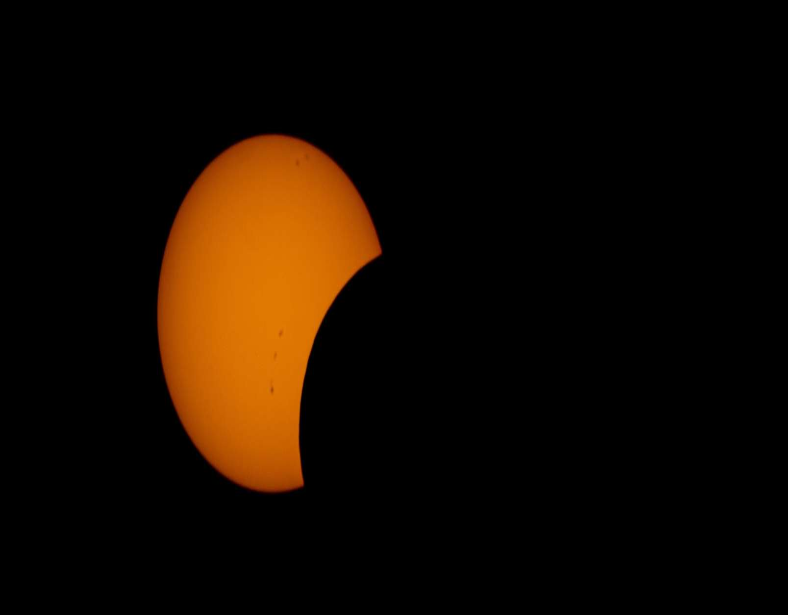Last Solar Eclipse of 2022. Partial in India.

A partial solar eclipse or ‘Surya Grahan’ will be visible over several regions of Europe, the Middle East, north-eastern parts of Africa, western Asia, the North Atlantic Ocean, and the North Indian Ocean today, 25 October. Except for the few states of the northeastern region, most of the states in India will be able to witness the solar eclipses. The ending of the eclipse will not be visible from India as it will be in progress after sunset.
Viewing the eclipsed Sun with the naked eye is not advised even for a very brief period of time. Even when the Moon blocks the majority of the Sun, it will still damage the eyes permanently and result in blindness.
Solar Eclipse or Surya Grahan occurs when the Moon comes between Sun and Earth and blocks the light of the sun, casting a shadow onto Earth. A that time, all three objects are in line, a solar eclipse takes place on a new moon day. When the lunar disc partially obscures the solar disc, there will be a partial solar eclipse.
Solar eclipse, which will last for 1 hour 45 minutes in India will be visible for more than an hour in cities like New Delhi, Mumbai, Ahmedabad, Surat, Pune, Jaipur, Indore, Thane, Bhopal, Ludhiana, Agra, Chandigarh, Ujjain, Mathura, Porbandar, Gandhinagar, Silvasa, Surat, and Panaji.
Cities like Hyderabad, Bengaluru, Chennai, Lucknow, Kanpur, Nagpur, Visakhapatnam, Patna, Mangaluru, Coimbatore, Ooty, Varanasi, and Thiruvananthapuram, will see the eclipse for less than an hour.
Several areas of the northeast like Aizawl, Dibrugarh, Imphal, Itanagar, Kohima, Silchar, and Andaman & Nicobar Island will not be able to see the solar eclipse at all.
The solar eclipse will begin in India before sunset, in the afternoon, according to the Ministry of Earth Science. The end of the solar eclipse, however, will not be visible from India, the ministry said
People should avoid watching the solar eclipse with the naked eye and should use special eye protection or indirect viewing methods to watch the solar eclipse.
Indirect projection is one of the safest ways of watching the solar eclipse, while a telescope, pinhole camera, or camera display can also be used to watch the eclipse. The camera display can incur some damage in the process.
Directly watching a solar eclipse can cause permanent damage to one’s retinas because of high-density radiation from the sun’s photosphere.
The safest way to view the solar eclipse is either by using the right filter, such as aluminized Mylar, black polymer, welding glass of shade number 14, or by projecting the image of the Sun using a telescope onto a white board.
Before even looking up at the sky during a solar eclipse, NASA advises eye protection.
Drive with your headlights on during the eclipse.
It is never advisable to substitute regular sunglasses for solar viewing or eclipse glasses.
Avoid using your camera to record the eclipse. If you are not wearing the appropriate glasses, there is always a chance that the Sun’s intense rays will harm your eyes.
Keep kids away from eclipse viewing areas if you don’t plan to be there to supervise them.
The next solar eclipse that will be visible from India is expected to occur on 2 August, 2027. It will be a total solar eclipse. From all parts of the country it will be seen as partial solar eclipse.









